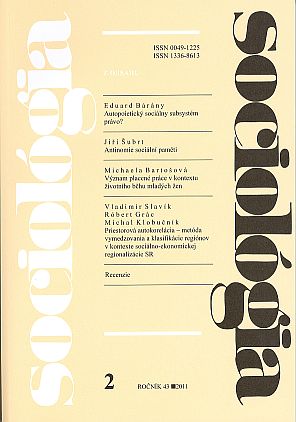Priestorová autokorelácia – metóda vymedzovania a klasifikácie regiónov v kontexte sociálno-ekonomickej regionalizácie SR
Spatial Autocorrelation – Method for Defining and Classifying Regions in the Context of Socio-Economic Regionalization in the Slovak Republic
Author(s): Róbert Grác, Michal Klobučník, Vladimír SlavíkSubject(s): Social Sciences
Published by: SAV - Slovenská akadémia vied - Sociologický ústav
Keywords: spatial autocorrelation; micro-regions; economically active population; unemployment rate
Summary/Abstract: Spatial Autocorrelation – Method for Defining and Classifying Regions in the Context of Socio-Economic Regionalization in the Slovak Republic. Polarization and differentiation of the society is the result of close links between social and economic dimension, which is reflected not only in economic but also in social differences between regions, along with a wide range of other different factors. The article presents the results of the analysis aimed to identify the problem-ridden and developed regions in the Slovak Republic at the municipal level based on the characteristics of the economically active population and unemployment rates in 2001. The main method applied for classifying regions was the spatial autocorrelation which plays an important role in spatial statistics and spatial econometrics. Identifying and implementing the right variables in space and time contributed to detection of micro-regional differentiation and its consequences within the structural constraints of the analyzed area. Sociológia 2011, Vol. 43 (No. 2: 183-204)
Journal: Sociológia - Slovak Sociological Review
- Issue Year: 43/2011
- Issue No: 2
- Page Range: 183-204
- Page Count: 22
- Language: Slovak

